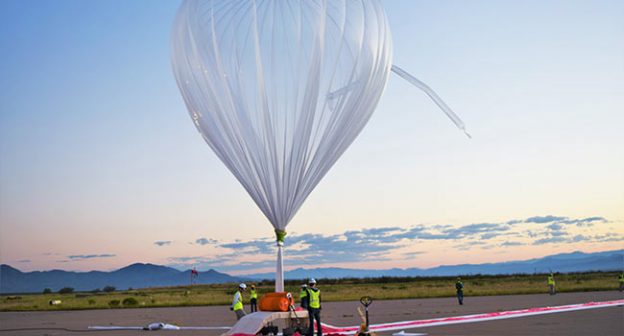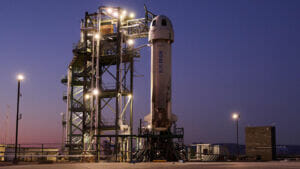A Tucson-based aerospace company that is using high altitude balloons to reach the stars in lieu of rockets just reached a major milestone when its stratospheric balloon, Stratollite, successfully accomplished a 27-hour mission.

In late August, World View launched its Stratollite craft from Page, Arizona with four remote sensing payloads from Ball Aerospace. Stratollite hung in the air for a full day and night cycle. This was the longest air time World View ‘s Stratollite clocked in, and is a step in the right direction of World View’s ultimate goal of having flight durations that are months long.
“Being able to do that, to be able fly through a full day and night, and make sure all of the power systems work was really important,” said World View’s Director of Marketing Andrew Antonio.
Stratollite is a persistent and steerable stratospheric balloon that could perform long-duration observations, similar to a geostationary satellite, only at a highly reduced cost, Antonio said.
World View grabbed headlines this summer after it launched a chicken sandwich into the stratosphere with Stratollite.
This recent test helped World View test its abilities to control Stratollite while it’s in the air through altitude control, Antonio said.
Up in the air, the winds are blowing in different directions at different altitude intervals, Antonio explains. So, at 50,000 feet, the winds may be blowing north, but at 60,000 feet the winds may be blowing south and so on.
Stratollite maneuvers between the many different altitudes to get where it needs to be. If the craft needs to go east, it will travel to an altitude headed that way.
During a full day and night cycle, temperature changes present buoyancy issues for balloons too, which in turn could have an impact on World View’s ability to control the Stratollite while it’s in the air. But Stratollite was capable of maneuvering during these changes just fine, Antonio said.
The World View team was also able to test that mission control could stay in contact with Stratollite for long periods of time, and they were able to look at how to keep the craft powered during its long flight.
When airborne, Stratollite’s power needs rely on a solar panel that is between the balloon mechanism and the payload vehicle. Making sure the Stratollite was able to properly power itself during the night was a major step in the right direction for long-term use during this previous mission, Antonio said.
Being able to soar for 24 hours, is also a sign Stratollite can be commercialized now, Antonio said.
Antonio equates Stratollite to a platform, where there are myriads of potential uses. The biggest and most obvious use for this technology would be to observe assets for prolonged periods of time. Farmers could have a Stratollite above their fields analyzing the crops, city planners can view traffic and first responders can set up communications networks with the platform.
All users would have to do, is to install observational equipment into the craft before sending it up into the sky for prolonged periods of time.
And, the research from testing Stratollite also informs World View’s other endeavor: space tourism. World View has a program called Voyager, which will take folks up into the stratosphere for a ride of a lifetime.
Next, on World View’s to-do list is to have Stratollite fly for a week, Antonio said.
As they continue to push the time limit Stratollite can fly, many different options open up for World View.
“If we can get (Stratollite flying) for weeks, months, years, we could drastically open up a new economy in the stratosphere,” Antonio said.




